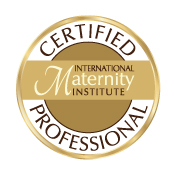Wouldn’t it be great to be able to understand your newborn’s behaviours? Well, researchers Peter Wolff, Heinz Prechtl and T Berry Brazelton found that newborn babies display characteristic patterns of behaviours.
Often, understanding these behaviour patterns can help new parents respond appropriately to their baby, which can help enhance attachment and their experience as new parents.
The behaviours are classified into the following 6 states of consciousness, including 2 Sleep States, 3 Wake States and Crying:
Quiet Alert: The longest period of quiet alert occurs after birth when a newborn closely observes her parents voices and faces. When babies are quietly alert they rarely move, their eyes are wide and bright and all their energy is channelled into looking and hearing.
They may turn their eyes towards a parent’s voice, and even reach out towards it. The quiet alert state is a great opportunity for socialising with your baby!
Active Alert: this is a more active and ‘fussy’ state that often occurs before feeding. The baby’s movements will be jerky and they’ll look around alot more.
Crying: the newborns’ communication system! Crying may indicate that the newborn is hungry , lonely, bored, uncomfortable…
Parents typically respond by picking their baby up and putting her to their shoulder to soothe. Interestingly, researchers have found that it is the picking up movement rather than the upright position that calms the baby and often puts the baby into the quiet alert state!
Drowsiness: this is the ‘falling asleep’ and ‘waking up’ state; the newborn’s eyes will be dull, glazed and unfocussed and the eyelids droopy; they may continue to move and smile or frown.
Newborns sleep 18 hours or more in 24 hours; this sleep is divided into 30 minute cycles of quiet sleep and active sleep.
Quiet sleep: peaceful, restful sleep! When in quiet sleep babies are relaxed, eyelids are closed and still and their breathing is regular. They’ll be quiet and still except for the occasional startle and very small mouth movements.
Active Sleep: or Rapid Eye Movement sleep. Babies are more ‘active’ in this sleep state and their breathing will be irregular and a little faster than in quiet sleep.
You may observe their eyes moving under the eyelids and the eyelids ‘fluttering’; they may also smile, grimace, frown and make sucking movements – interesting to watch! Babies usually wake up from the active sleep state rather than from quiet sleep.
Recognizing and understanding these 6 states of being can help parents get to know and understand the needs of their newborn baby, and so can contribute to making those first few weeks of parenthood an empowering and enjoyable experience for all!
Klaus, M and Klaus, P. (1999) Your Amazing Newborn
Nugent, K. (2011) Your Baby is Speaking to You


